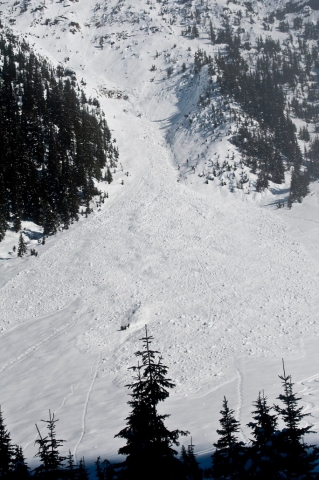Local avalanche conditions? In a word, 'sketchy'
The sketchy avalanche conditions are widespread all over B.C.’s mountainous regions and it is a great concern in local slackcountry and backcountry. On the 23rd of February two persons were reported seriously injured in an avalanche in the Twin Lakes area in Kootenay Pass in the afternoon.
Dan Reid, Pro Ski Patroller at Red Mountain Resort, explains that the avalanche concern is high locally even though we haven’t got as much of a base as surrounding areas. The weak layer of highest concern was formed during the recent dry and cold spell and is now buried under 1 to 2 metres of snow even here.
“We heard whompfs and saw shooting cracks everywhere. Even at low incline close to the highway” says Neeson Champion, who just spent a week doing his Avalanche Operations level 1 course in Kootenay Pass.
Whomps is the sound when the snow settles and air escapes from a failing layer. Neeson explains that the large snow crystals, surface hoar, which was built during the cold spell, were found to be as tall as 40 mm in sheltered areas. This means that there is a profound risk of the crystals failing under heavy loads making slabs slide and creating large avalanches. Cornices are a huge concern too, as they are weak for the time being says Dan. If the cornices fall they are likely to trigger an avalanche on the slope below.
There has been wide propagation in the local snowpack, making avalanches slide far away from the trigger point. Canadian Avalanche Centre forecaster Karl Klassen writes on his blog that there was a size 2,5 avalanche lightly triggered by a person, which propagated 200 metres making a size 3 avalanche slide in the Kootenay-Boundary Region. Neeson says that there were avalanches up to size 3 hitting the highway in Kootenay Pass during avalanche control with deposits between 3-5 metres deep.
All elevations and aspects are concerned and there are touchy results during snowpack evaluation tests. People travelling in avalanche terrain are suggested to use extra caution, make conservative decisions, and avoid complex features even though no obvious signs of unstable snow.

























